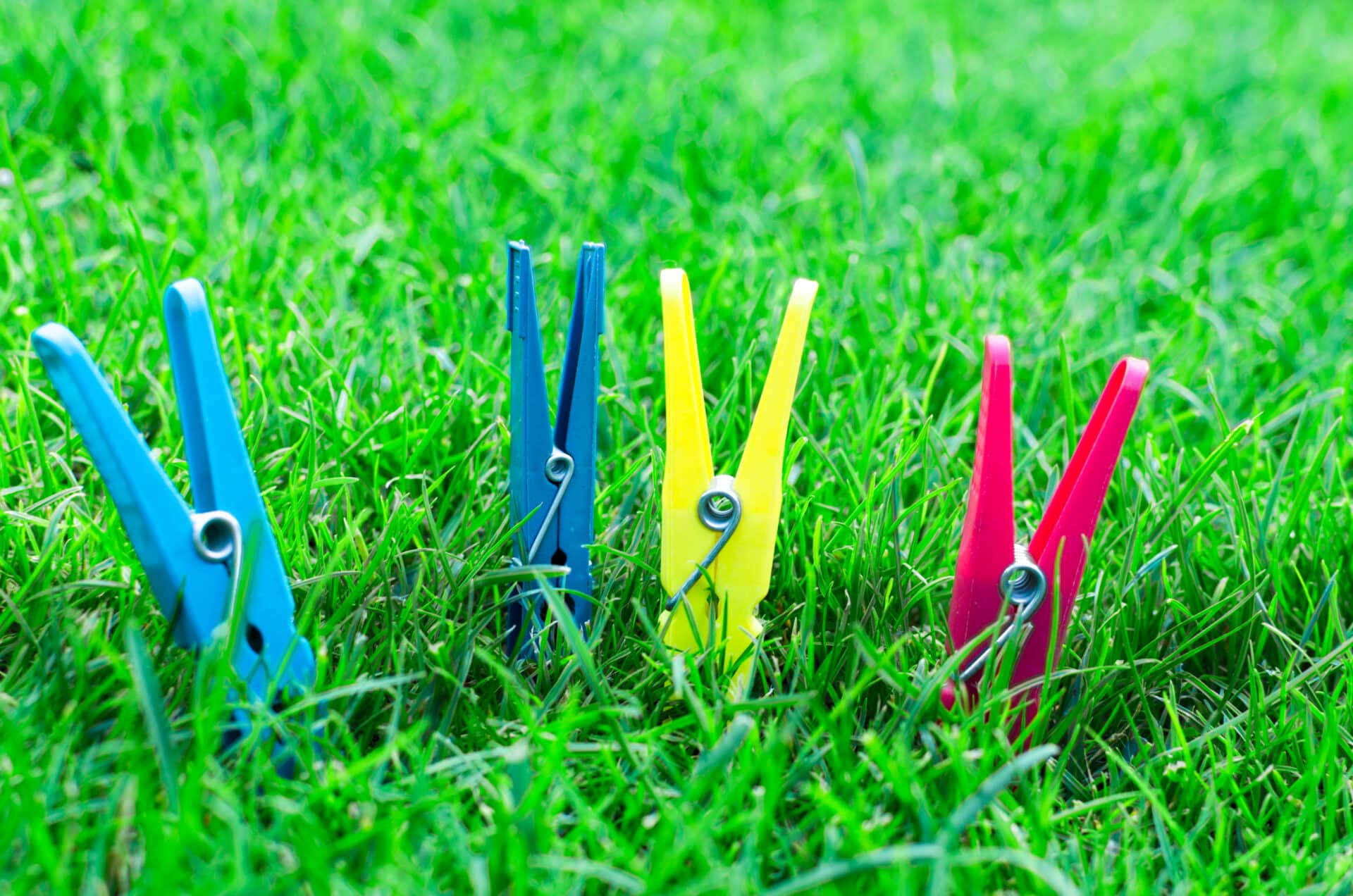Distilled white vinegar is a natural and effective alternative to traditional laundry detergent that can be used for washing clothes. It is an environmentally friendly, non-toxic and inexpensive solution that is safe for both you and the environment. White vinegar can help remove odors, stains, and buildup from your clothing while preserving the fabric’s color and texture. This guide will explain how to use distilled white vinegar to wash your clothes in the most efficient way.The use of distilled white vinegar for washing clothes offers a number of benefits. Firstly, it is an effective natural fabric softener which helps to reduce static cling in clothes. Secondly, it can also help to remove odors and stains from clothing. In addition, distilled white vinegar has anti-fungal properties which makes it ideal for removing mildew and other types of mold from garments. Finally, using this type of vinegar for laundry can help to restore the color of faded fabrics as it helps to balance the pH levels in the fabric.
Using Distilled White Vinegar for Washing Clothes
Distilled white vinegar is a great alternative to traditional laundry detergents and fabric softeners, as it can effectively remove dirt and odors from clothing without the use of harsh chemicals. Plus, it’s a much more affordable option than store-bought detergents. This natural cleaner can be used to clean everything from delicate fabrics to heavily soiled items. Here are some tips for using distilled white vinegar for washing clothes:
1. Pre-treat Stains: To pre-treat stains, simply mix one cup of distilled white vinegar with one cup of warm water and apply the solution directly onto the stain. Let it sit for a few minutes before washing as usual.
2. Add It To The Wash Cycle: For general cleaning, add ½ cup of distilled white vinegar to the wash cycle along with your regular detergent. This will help to break down dirt and odors while also brightening whites and colors.
3. Use It As A Fabric Softener: Distilled white vinegar can also be used as a fabric softener in place of traditional fabric softeners or dryer sheets. Simply add ½ cup of distilled white vinegar to the rinse cycle in place of fabric softener.
4. Use It As A Spot Cleaner: For spot cleaning delicate fabrics or upholstery, mix one part distilled white vinegar with two parts water in a spray bottle and spray directly onto the surface. Gently blot away stains with a damp cloth.
By following these tips, you can easily incorporate distilled white vinegar into your laundry routine. Not only is it an effective cleaner, but it’s also much more affordable than traditional laundry detergents and fabric softeners!
Distilled White Vinegar for Washing Clothes
Distilled white vinegar is an excellent choice for washing clothes. It is a natural and safe alternative to conventional laundry detergents, which can often contain harsh chemicals. Vinegar is an affordable and effective way to clean laundry and remove odors. It can also be used to reduce static cling, soften fabrics, and remove stains. Additionally, it is biodegradable, so it is environmentally friendly.
Using distilled white vinegar for laundry does not require any special techniques or equipment. It can simply be added to the washing machine along with the regular detergent. For best results, use a cup of distilled white vinegar per load of laundry. If you are concerned about the smell of vinegar, it will fade as the clothes dry. You can also add a few drops of essential oil for a pleasant scent.
When using distilled white vinegar for laundry, it is important to check the care labels on clothing items before washing them. Some fabrics may not respond well to vinegar and may become damaged or discolored if washed with it. It’s also important to test any stained items on an inconspicuous part of the garment before treating them with vinegar. In general, however, distilled white vinegar is safe for most types of fabric and can be used as a natural cleaning alternative in the laundry room.
Advantages of Using Distilled White Vinegar for Washing Clothes
Using distilled white vinegar for washing clothes is an effective and economical way to clean and treat fabrics. It is a natural, non-toxic alternative to harsh chemicals and fabric softeners, as well as being an effective fabric freshener. Here are some of the advantages of using distilled white vinegar for washing clothes:
One of the primary advantages of using distilled white vinegar is that it is a natural disinfectant. Vinegar has antimicrobial properties that can help to kill germs and bacteria on fabrics, making it an excellent choice for cleaning heavily soiled items.
Another advantage of using distilled white vinegar for washing clothes is that it can remove stubborn stains. The acidity in the vinegar helps to break down and remove tough stains such as grease and oil, as well as set-in dirt and grime.
Distilled white vinegar can also help to soften fabrics without the need for harsh chemicals or fabric softeners. This can be especially useful when washing delicate items such as lingerie or baby clothes.
In addition, distilled white vinegar can also be used to deodorize fabrics, helping to eliminate odors caused by sweat, smoke, pets, mildew and more. Simply add a few tablespoons of the vinegar to your wash cycle along with your regular detergent for a fresh smelling result.
Finally, using distilled white vinegar for washing is a great way to save money on laundry costs. It is much less expensive than many commercial cleaners or fabric softeners and is just as effective at cleaning, freshening and softening fabrics.
What Are the Disadvantages of Using Distilled White Vinegar for Washing Clothes?
Using distilled white vinegar for washing clothes can have some disadvantages. Firstly, the strong acidic nature of vinegar can be hard on fabrics and may cause colors to fade over time. Also, vinegar is not a detergent and will not effectively remove normal dirt or stains from clothes. It may also leave an unpleasant odor in the clothes after washing due to its pungent smell. Additionally, vinegar can damage certain fabrics such as silk or wool and should not be used with these materials. Finally, distilled white vinegar may cause skin irritation when it comes in direct contact with the skin, so it’s important to wear gloves when washing clothes with this product.

Removing Stains with Distilled White Vinegar
Using distilled white vinegar to remove stains from clothes is a time-tested and trusted method. It can be used to treat a range of stains, including those caused by sweat, red wine, coffee, and ink. The acidic nature of vinegar helps break down the molecules in the stain, making it easier to remove.
To use white vinegar for stain removal, it should be mixed with an equal amount of water. This solution should then be applied directly to the stained area and left for around 15 minutes. After this time has elapsed, the solution should be wiped away with a damp cloth. Once this is done, the stained area should then be washed as normal using detergent and warm water.
Distilled white vinegar can also be used as a pre-treatment before laundering clothes that have tough or set-in stains. To do this, mix one part vinegar with two parts water and apply it directly to the stained area before washing as normal. Depending on the type of fabric being washed, an extra rinse cycle may need to be added after laundering in order to remove any remaining odors or residue from the vinegar solution.
When using distilled white vinegar for stain removal, it is important to remember that certain fabrics may not react well to acidic substances and could become discolored or damaged if exposed for too long. As such, it is always recommended that a small test patch is carried out on an inconspicuous area first in order to check for any adverse reactions before treating more visible areas of clothing.
Distilled White Vinegar Brighten Colors on Clothes
Distilled white vinegar is often used to brighten colors on clothes. It has a mild acidity which helps to lift away dirt and soap residue, making it a great choice for cleaning clothes. Vinegar also helps to reduce fading of colors, making them look brighter and fresher. When used in a washing machine, vinegar acts as a natural fabric softener that helps restore the original color of fabrics over time.
To use vinegar for brightening colors on clothes, add one cup of distilled white vinegar to the rinse cycle of the washing machine. The vinegar should be added before adding laundry detergent. This will help disperse the vinegar throughout the water and ensure that all areas of the clothing get exposed to it. After adding the vinegar, let the washing machine finish its cycle before removing the clothing from it.
It is important to note that vinegar should not be used with chlorine bleach as this can cause adverse reactions with certain fabrics. It is also important to spot test any colored fabrics before using this method as some dyes may be sensitive to acidic solutions like vinegar and fade or discolor when in contact with it. Additionally, avoid using too much vinegar at once as this can cause fabric fibers to weaken over time, leading to premature fading or wear of clothing items.
In conclusion, distilled white vinegar can be used to brighten colors on clothes by helping lift away dirt and soap residue while reducing fading due to environmental factors like sunlight or regular washing cycles. It should be used in moderation however in order to avoid any potential adverse reactions or weakening of fabric fibers due to prolonged exposure.
Making a Solution of Distilled White Vinegar for Washing Clothes
Making a solution of distilled white vinegar for washing clothes is an easy and cost-effective way to get your laundry clean and fresh. Distilled white vinegar is an all-natural cleaner that is safe for both your clothes and skin. The solution is easy to make and can be used in both top-load and front-load washing machines. Here’s how to make a solution of distilled white vinegar for washing clothes:
First, fill a large bucket or bowl with warm water. Add 1 cup of distilled white vinegar to the water and stir to combine. The amount of vinegar you use can be adjusted based on the size of your load. For heavily soiled loads, you may want to add up to 2 cups of vinegar.
Next, add your clothes to the mixture and let them soak for at least 15 minutes before transferring them to the washing machine. This will help loosen any dirt or stubborn stains on your clothes before they go through the wash cycle.
Finally, transfer the soaked clothing from the bucket into the washer, adding detergent if necessary. Run the wash cycle as normal, using hot water for whites and warm water for colored items. After the cycle is complete, hang or dry your clothes as you normally would. Your clothing should come out clean and smelling fresh!
Using a solution of distilled white vinegar for washing clothes is an easy way to get your laundry clean without using harsh chemicals or expensive cleaners. Give it a try next time you do laundry!

Conclusion
Using distilled white vinegar for washing clothes is a great way to reduce the amount of chemicals used in your laundry routine. The vinegar helps to break down dirt, grime, and detergent residues which makes your clothes cleaner and fresher. It is also an excellent fabric softener and can help to keep colors from fading. Vinegar has antifungal and antibacterial properties which can help to keep clothing free of bacteria and fungi. Best of all, it’s safe for use on all fabrics and won’t damage the fabric or colors like harsh detergents can.
In conclusion, distilled white vinegar is a great option for washing your clothes as it is effective at removing dirt, grime, and detergent residues while being completely safe for use on all fabrics. It also has the added benefit of providing antifungal and antibacterial properties which helps to keep clothing fresh and free of bacteria or fungi. For these reasons, using distilled white vinegar for washing clothes is highly recommended.

